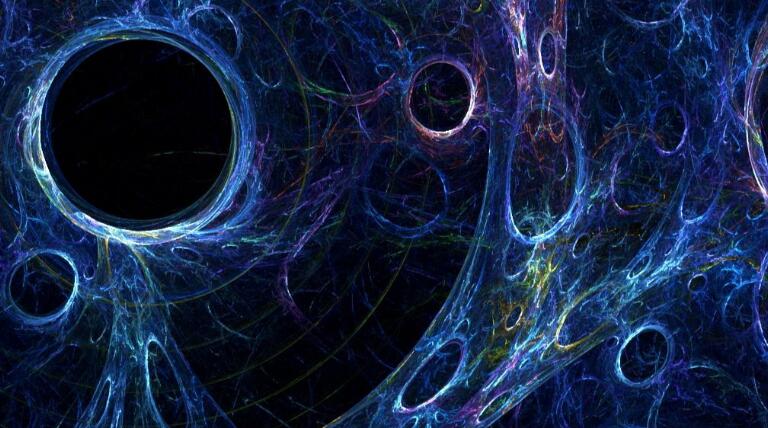For human beings, the universe is a very large structure. Observing the universe from the earth, no matter from any angle, the universe has a completely different appearance.
In the 20th century, astronomers were looking for the laws of the universe. Does the arrangement of celestial bodies and galaxies in the universe have any laws? Or is it completely random?
The universe is so big. From one place to one place, the scenery seen is roughly the same. Random arrangement has always been the main opposite of astronomers. However, as humans observe more and more universes, they find that the celestial bodies in the universe may not be random. arrangement!
The Universe Net shows that the universe in different locations has completely different scenery:
If the celestial bodies in the universe are arranged randomly, then most regions of the universe are similar. If you look in all directions in the universe, you can see roughly the same scenery.
However, as scientists see more and more universes, they find that galaxies in the universe will form galaxy clusters, and galaxy clusters will also form “filaments” and larger “celestial bodies”. These filaments connect the universe. A large number of celestial bodies eventually form a cosmic web.
This arrangement pattern violates the theory of randomness, because there are dense areas of matter in the cosmic web, and there are also “void areas” with almost no celestial bodies. Different locations in the universe have completely different scenery.
The universe looks random, but it is full of structure. This shows that the universe may not be a random space, but a space with rules.
Scientists put forward the “fractal theory” through the special mode of the universe-whether it is enlarged or reduced, the structure and randomness of the universe are repeating patterns.
Just like when we look at the snow and look at a piece of snow, the snowflakes in this area seem to be evenly distributed, but if we continue to zoom in and look at it, we will find that every snowflake has a structure; continue to zoom in, from the perspective of the molecular domain, It seems that the molecules of snowflakes are all random, but if you continue to zoom in, you will find that the molecules have atoms and electrons, and have microstructures.
Fractal theory is a pessimistic theory. When humans explore the universe, they will only discover repetitive structures; when they explore the microcosm, they will continue to repeat them.
The world we live in is just a middle area. Whether looking outward or inward, it is difficult to find the end. The universe and the micro world may be an infinite and infinitely small world.
After the fractal theory was put forward, many scientists objected, because the “holes” in the cosmic web actually contain a lot of dark matter, and the cosmic web we see is actually less than 5% of the cosmic matter. If scientists can observe all of the universe Matter, you may find that the universe is indeed random.
Does the universe have consciousness?
The discovery of the cosmic network gave scientists a brand new theory of the universe—the cosmic network is very similar to the neural network of the human brain, and human consciousness comes from the brain, so the cosmic network that is very similar to the neural network may not have life. awareness?
Scientists currently believe that human consciousness originates from the vibration of the neural network, and the cosmic network in the universe will also vibrate. This is a completely new theory, and it is also too advanced.
If consciousness exists in the universe, then the fractal theory may be correct. There is a universe in every life body, and we are just living in a conscious “cosmic creature”!






